A.Stella
Like in a Beckett story, the world is reduced to just a few things, its essential spatial dimensions, and a little light and shadow… As it happens, this is A.Stella’s world: a surface, made of paper or canvas, and five geometric forms which look like five letters (п,C,Y,T,E). Five forms which, in the negative, each introduce their complementary “double”. This seems as straightforward as a handful of Euclidean axioms making a whole geometry possible, or as a few letters making a whole linguistic structure possible. On a rectangular canvas, a “grapheme” is, for example, painted glossy white, while its complementary is painted matt white. On a nearby canvas of the same format, the grapheme is painted matt white and its complementary glossy white. The two pictures form a “Geogramme” and, already, A.Stella’s geometric minimalism opens onto a perceptive abyss: solid and hollow are forever being reversed, as are style and content, and inside and out. And each picture can be regarded as a mirror image of the other.
The Geogrammes are like flickers scintillating on a surface. You think that the artist is writing a sign on a surface and in so doing delimiting a before and an after (in time), a foreground and a background (in space). But through these interplays of glossiness and mattness, “solids” and “voids”, in ceaseless reversals between a form and its shadow, A.Stella seems to be refusing any definitive inscription, in both time and space. Every grapheme blinks, sparkles, is duplicated and reversed, moves forwards and backwards… It is a mirroring, a power inherent to the surface, emitting a perceptive sign which then flows back towards its place of origin.
Percepts
At a pinch, A.Stella does not paint forms, nor does she sculpt objects, but, as she herself writes, she creates a “mechanics of perception”; she paints and sculpts “percepts” which are the articulation between two forms, between two perceptions. Her work self-represents itself, and self-develops itself, seeking simply to create variations in our visual perceptions, and get them “dancing”. The origin of the “images” is not external to the surface, nothing comes and projects itself, in the strict sense: but different qualities of paint and qualities of light stir potential forms, which are never totally “frozen” or “delimitable”. Paradoxically, the geometric aridity and precision of the graphemes are forever shifting from place to place, breaking up and growing lighter. With A.Stella, we enter a sort of ice palace, a labyrinth that is at once closed upon itself and infinite.
Relief
Moving from canvas to paper, A.Stella also moves to relief, and from two to three dimensions. So is this the “end” of the surface, its hollowing and convexity as volume, its sundering from flatness? Yes and no. “Through vertical incisions and horizontal articulations, with no additions or deductions, from one sheet of paper I raise up this new dimension. The incision/articulation acts on the back and front of the paper’s surface simultaneously, and produces the perception of two elements by their projection which places them one in the foreground, the other in the background”, the artist writes about her “Planogrammes”.
The surface is folded and unfolded as relief graphemes. But once again what is involved here is the unfurling of surface powers: for all the relief graphemes can (potentially) be folded again, merging anew in a blank surface of paper. Whatever the new Planogramme produced by the artist, the surface remains “rediscoverable”, “underlying”, it remains in a way untouched. The Planogrammes, like the Geogrammes, are immanent variations on the surface, but variations that are not isolated, and articulated between them. The “subject” (at once the artist, the creative gesture and the work produced) lies in the folds, in the interstice between forms, in their rhythmic nature and their breathing.
Language
This infinitely varied and infinitely light geometric tautology is, in my view, traversed by another dimension. The “graphemes” are spare forms, to be sure, but they are also quasi-letters.* They beckon (silent, indeterminate, fragmentary) to language, towards a possible articulation of an unknown word, a foreign language. A.Stella has produced many artist’s books which, for her, are another way of folding and unfolding forms and surfaces, and connecting them together. But beyond this they are nevertheless… books, and one cannot help seeing in them, symbolically, potential “texts”.
A.Stella’s latest work is even a large … library! Or more precisely a “Bibliogramme”: a large hollowed-out “T” made of wooden planks, where the large complementary “U” is, for its part, filled by many different artist’s books. Text and words appear more and more.
But as the forms designate nothing other than themselves and their organization as percepts, the graphemes and signs deliver no meaning or message. We are on the limit of linguistic articulation, and meaning. And we are also and above all on the borderline between the representation of a letter and the representation of a thing. No matter how abstract it may be, A.Stella’s “letter” does not separate itself from its tangible condition as form.
The geometric structure of things, the linguistic structure of language, the conditions of visibility and the conditions of readability are “materialized” in A.Stella’s work. And set in a state of tension with each other. With economy, levity, and elegance.
* To borrow the term used by Françoise Le Roux to describe each one of A.Stella’s quasi “letters”.
Translated by Simon Pleasance & Fronza Woods
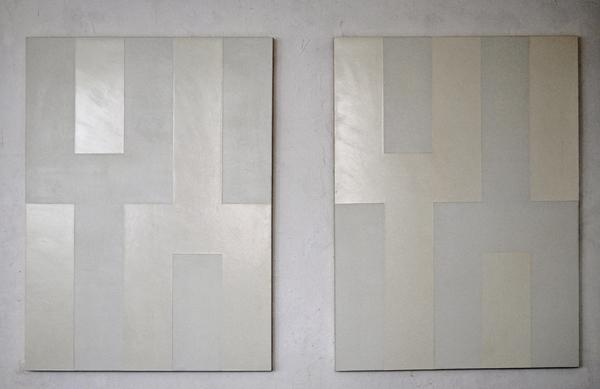
Oil painting on canvas, 160 x 120 cm
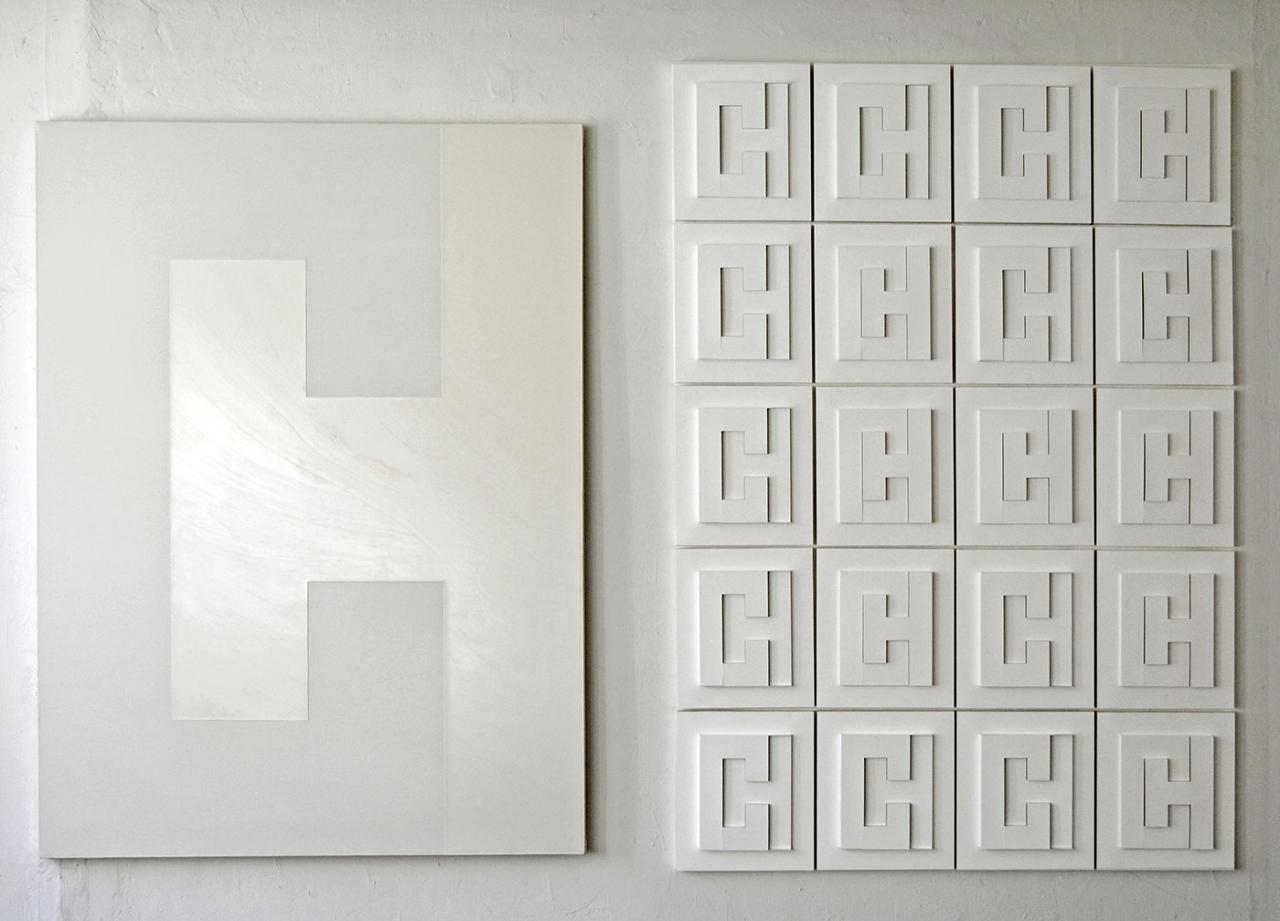
175 x 120 cm
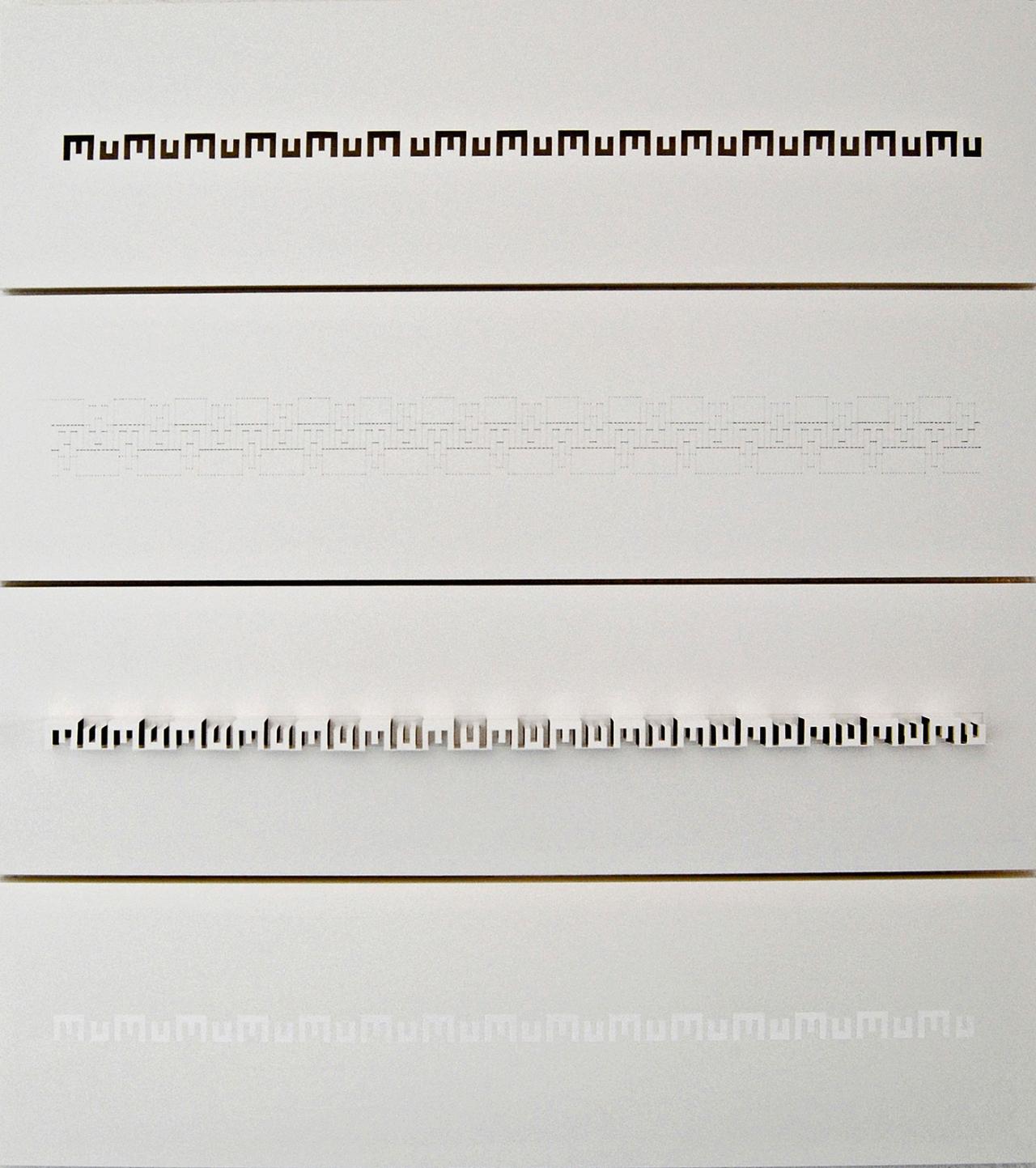
4 elements : cut, graphic, planogram, paint, 2014. 90 x 85 x 2 cm
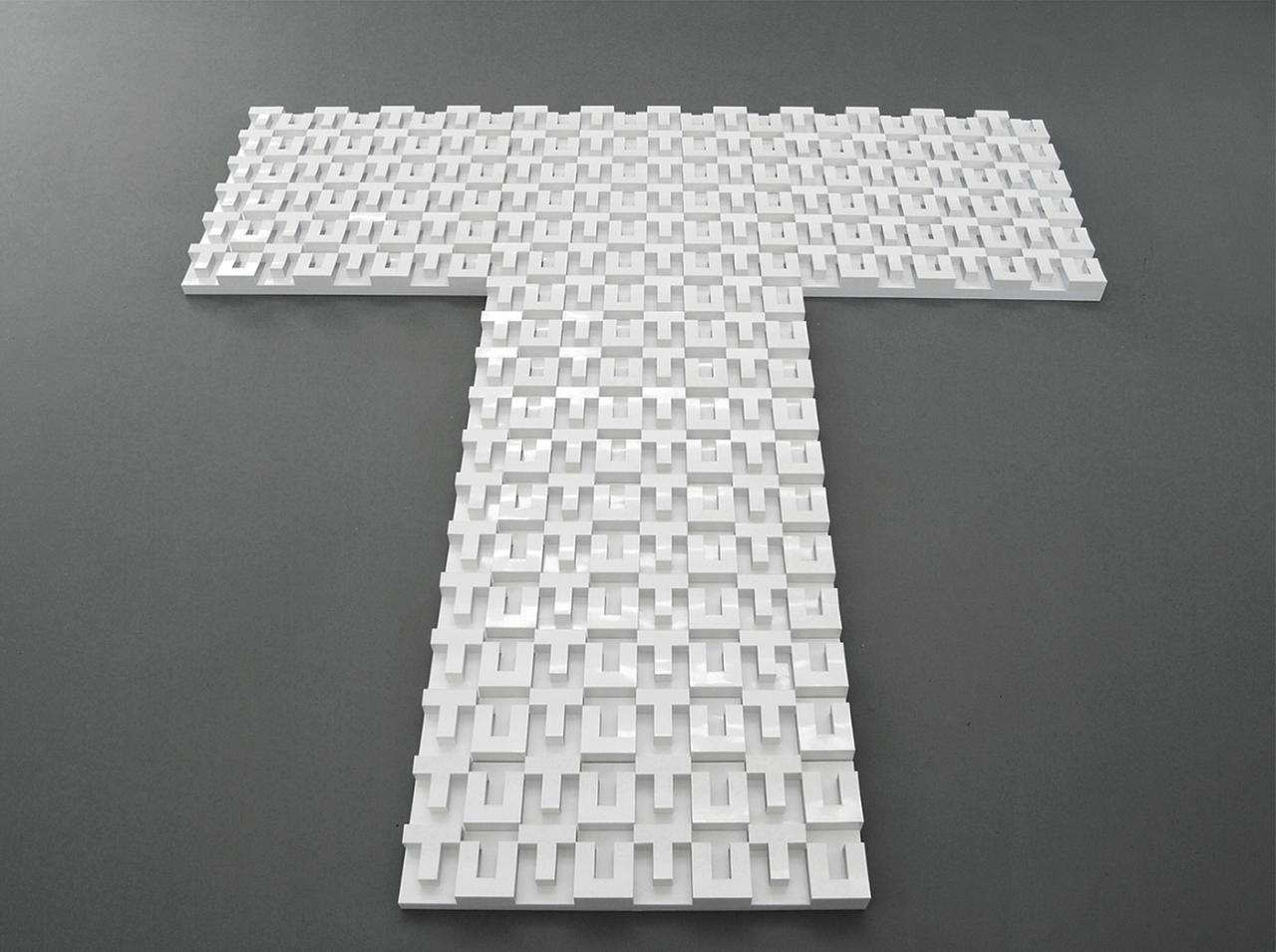
192 x 144 x 4 cm
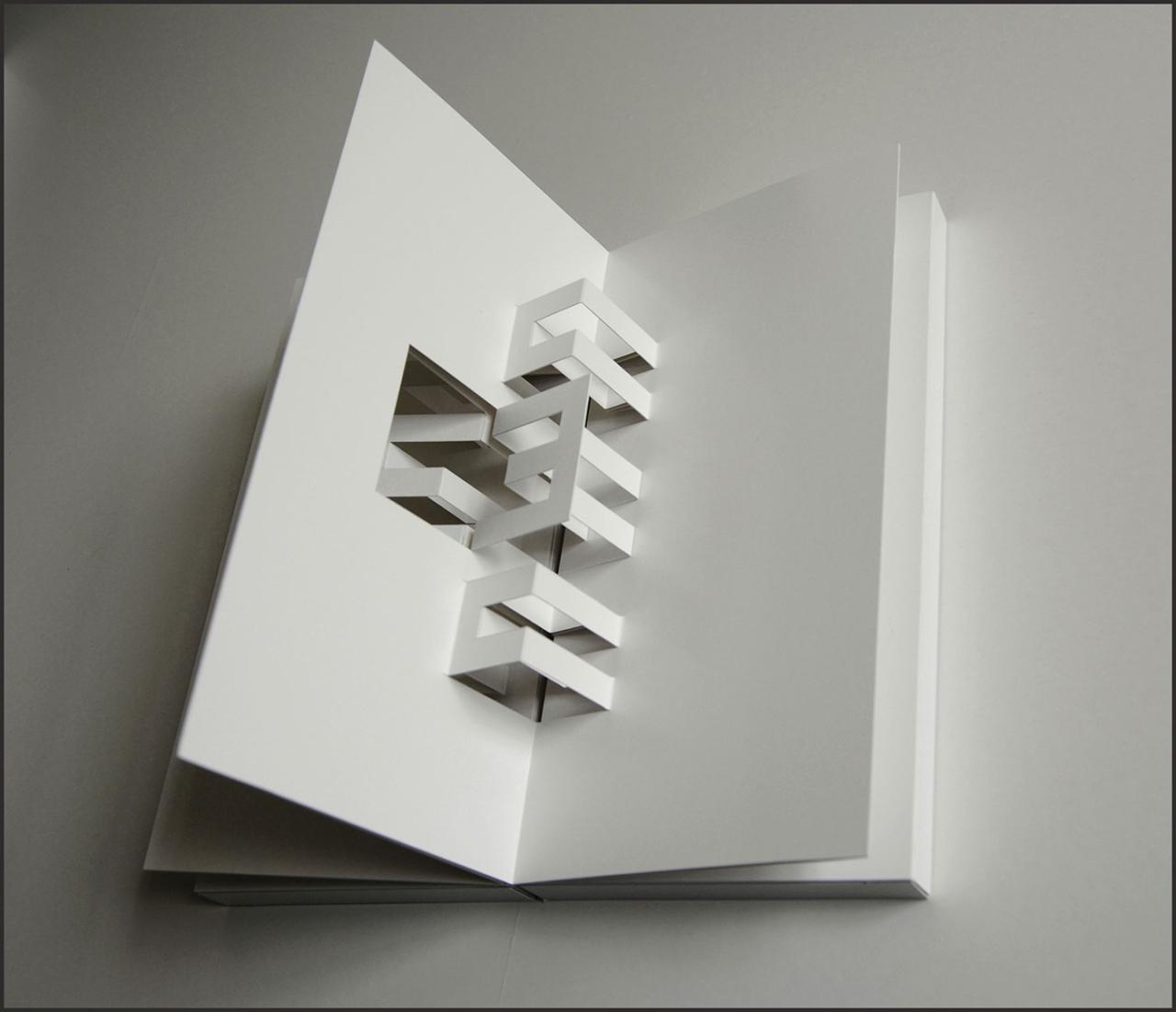
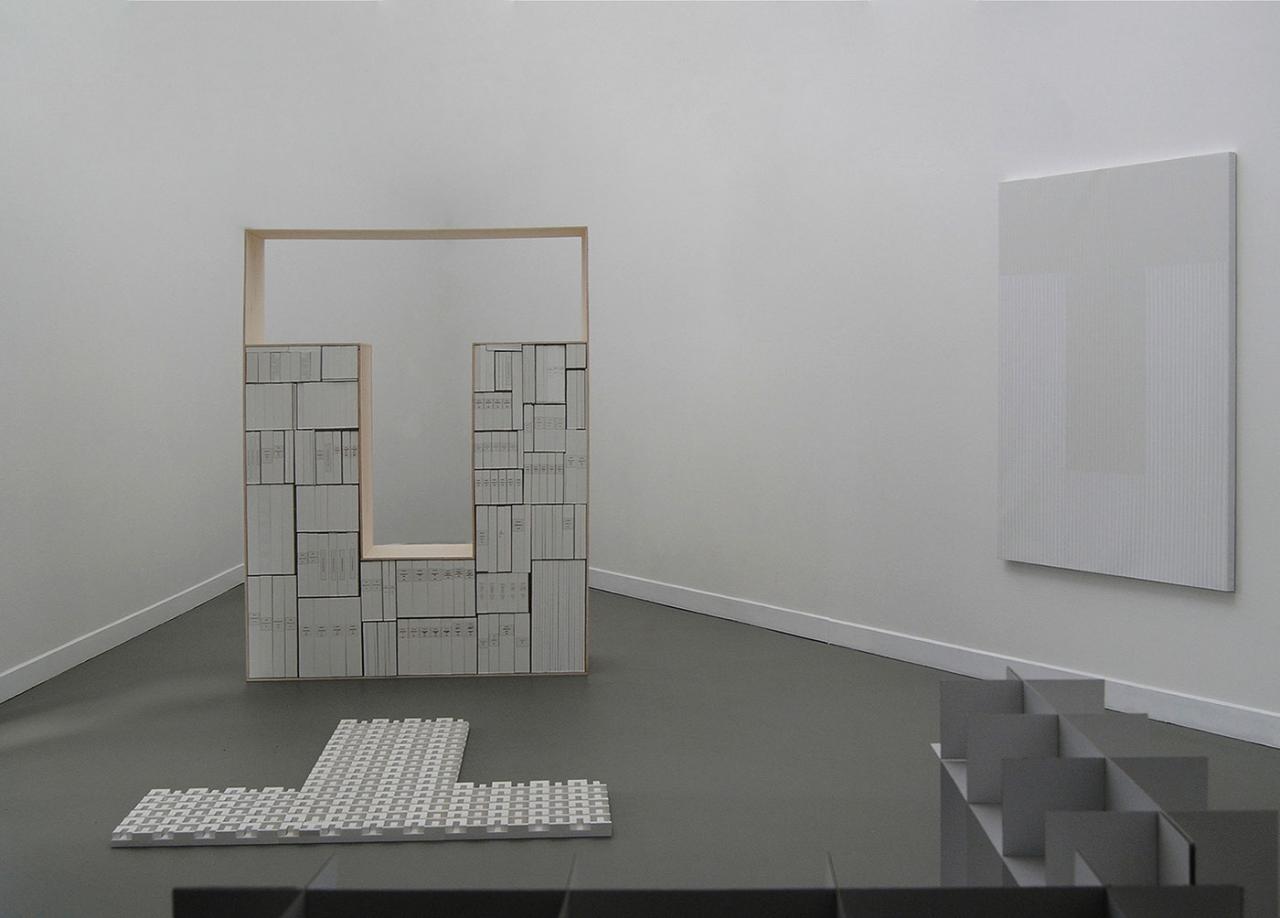
Exhibition/Installation view of "Bibliogramme", Galerie de la Médiathèque Jules Verne, La Ricamarie, 2019
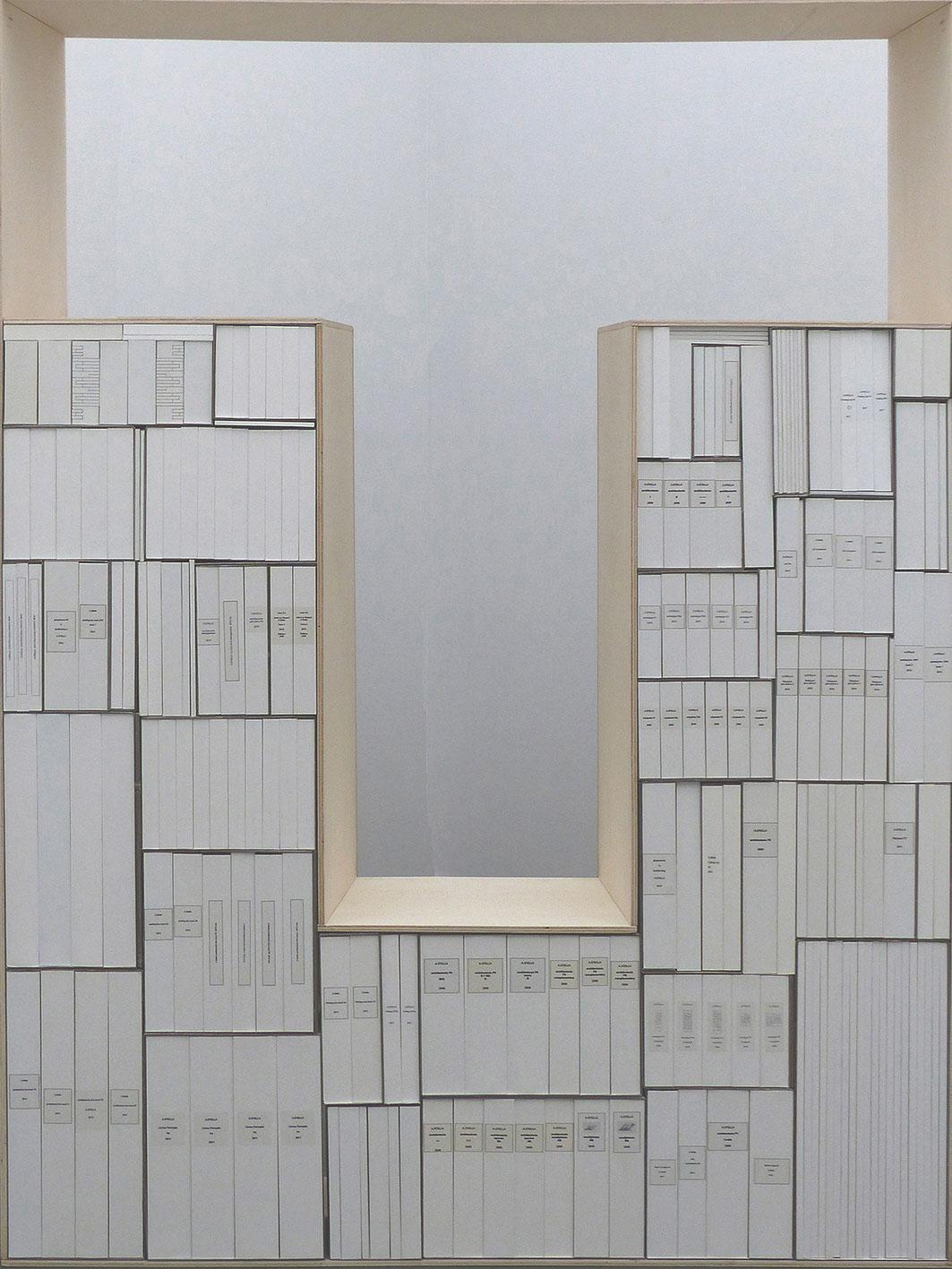
Exhibition/Installation view of "Bibliogramme", Galerie de la Médiathèque Jules Verne, La Ricamarie, 2019